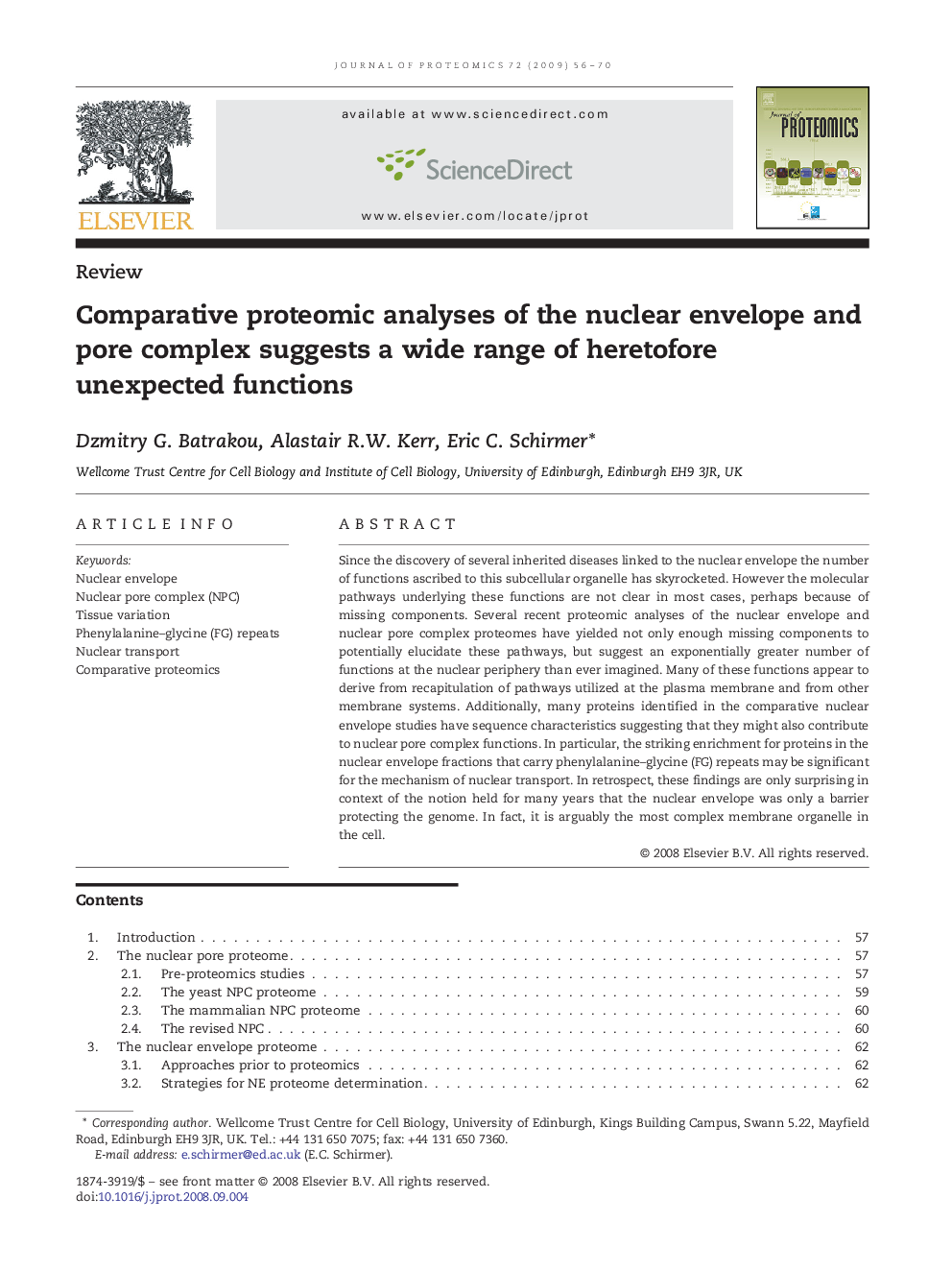| Article ID | Journal | Published Year | Pages | File Type |
|---|---|---|---|---|
| 1227157 | Journal of Proteomics | 2009 | 15 Pages |
Since the discovery of several inherited diseases linked to the nuclear envelope the number of functions ascribed to this subcellular organelle has skyrocketed. However the molecular pathways underlying these functions are not clear in most cases, perhaps because of missing components. Several recent proteomic analyses of the nuclear envelope and nuclear pore complex proteomes have yielded not only enough missing components to potentially elucidate these pathways, but suggest an exponentially greater number of functions at the nuclear periphery than ever imagined. Many of these functions appear to derive from recapitulation of pathways utilized at the plasma membrane and from other membrane systems. Additionally, many proteins identified in the comparative nuclear envelope studies have sequence characteristics suggesting that they might also contribute to nuclear pore complex functions. In particular, the striking enrichment for proteins in the nuclear envelope fractions that carry phenylalanine–glycine (FG) repeats may be significant for the mechanism of nuclear transport. In retrospect, these findings are only surprising in context of the notion held for many years that the nuclear envelope was only a barrier protecting the genome. In fact, it is arguably the most complex membrane organelle in the cell.
